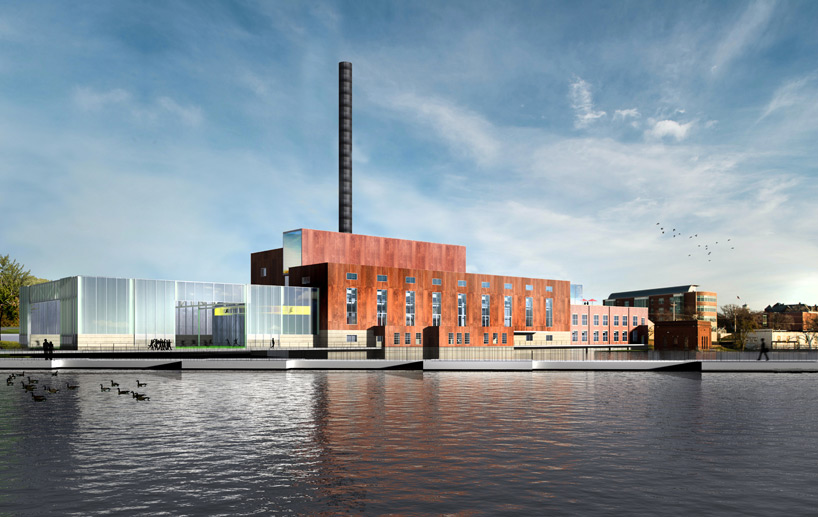Beloit College announced that it has selected Studio Gang Architects to lead the conversion of a century-old power plant along the Rock River riverfront in Wisconsin.
The school’s board of trustees approved the selection on Saturday after a series of updates regarding the power plant’s sale from Alliant Energy to the college. If all goes well, the school said in a release that Alliant Energy would formalize a transition of the property in 2016.
The release reveals that a “selection committee comprised of Beloit trustees, staff, faculty, and students selected Studio Gang for their creativity, talent, vision, and care, but most of all—their enthusiasm for approaching this project as both collaborator and partner, learner and leader.”
According to designboom, the power plant will be converted into a recreation facility with a coffee shop, lounges, club rooms, a conference center, lecture hall, and theater.
In addition, a sporting facility will also be housed in the building, equipped with a three-lane track, eight-lane competition swimming pool with seating for 250 spectators, a 10,000-sf fitness center, and a 17,000-sf gymnasium.

Alliant Energy's Blackhawk Generating Station, here flanked (left) by Beloit College's Aldrich Residence Hall and Center for the Sciences (right). The cupola of the college's Middle College administration building is visible to the far right. Photo credit: Trevor Johnson.
Related Stories
| Nov 10, 2011
Skanska Moss to expand and renovate Greenville-Spartanburg International Airport
The multi-phase terminal improvement program consists of an overall expansion to the airport’s footprint and major renovations to the existing airport terminal.
| Nov 10, 2011
Suffolk Construction awarded MBTA transit facility and streetscape project
The 21,000-sf project will feature construction of a cable-stayed pedestrian bridge over Ocean Avenue, an elevated plaza deck above Wonderland MBTA Station, a central plaza, and an at-grade pedestrian crossing over Revere Beach Boulevard
| Nov 10, 2011
Thornton Tomasetti’s Joseph and Choi to co-chair the Council on Tall Buildings and Urban Habitat’s Outrigger Design Working Group
Design guide will describe in detail the application of outriggers within the lateral load resisting systems of tall buildings, effects on building behavior and recommendations for design.
| Nov 9, 2011
Lincoln Center Pavilion wins national architecture and engineering award
The project team members include owner Lincoln Center for the Performing Arts, New York; design architect and interior designer of the restaurant, Diller Scofidio + Renfro, New York; executive architect, FXFOWLE, New York; and architect and interior designer of the film center, Rockwell Group, New York; structural engineer Arup (AISC Member), New York; and general contractor Turner Construction Company (AISC Member), New York.
| Nov 9, 2011
Sika Sarnafil Roof Recycling Program recognized by Society of Plastics Engineers
Program leads the industry in recovering and recycling roofing membrane into new roofing products.
| Nov 9, 2011
American Standard Brands joins the Hospitality Sustainable Purchasing Consortium
American Standard will collaborate with other organizations to build an industry-wide sustainability performance index.
| Nov 8, 2011
Transforming a landmark coastal resort
Originally built in 1973, the building had received several alterations over the years but the progressive deterioration caused by the harsh salt water environment had never been addressed.
| Nov 8, 2011
WEB EXCLUSIVE: Moisture-related failures in agglomerated floor tiles
Agglomerated tiles offer an appealing appearance similar to natural stone at a lower cost. To achieve successful installations, manufacturers should provide design data for moisture-related dimensional changes, specifiers should require in-situ moisture testing similar to those used for other flooring materials, and the industry should develop standards for fabrication and installation of agglomerated tiles.


















